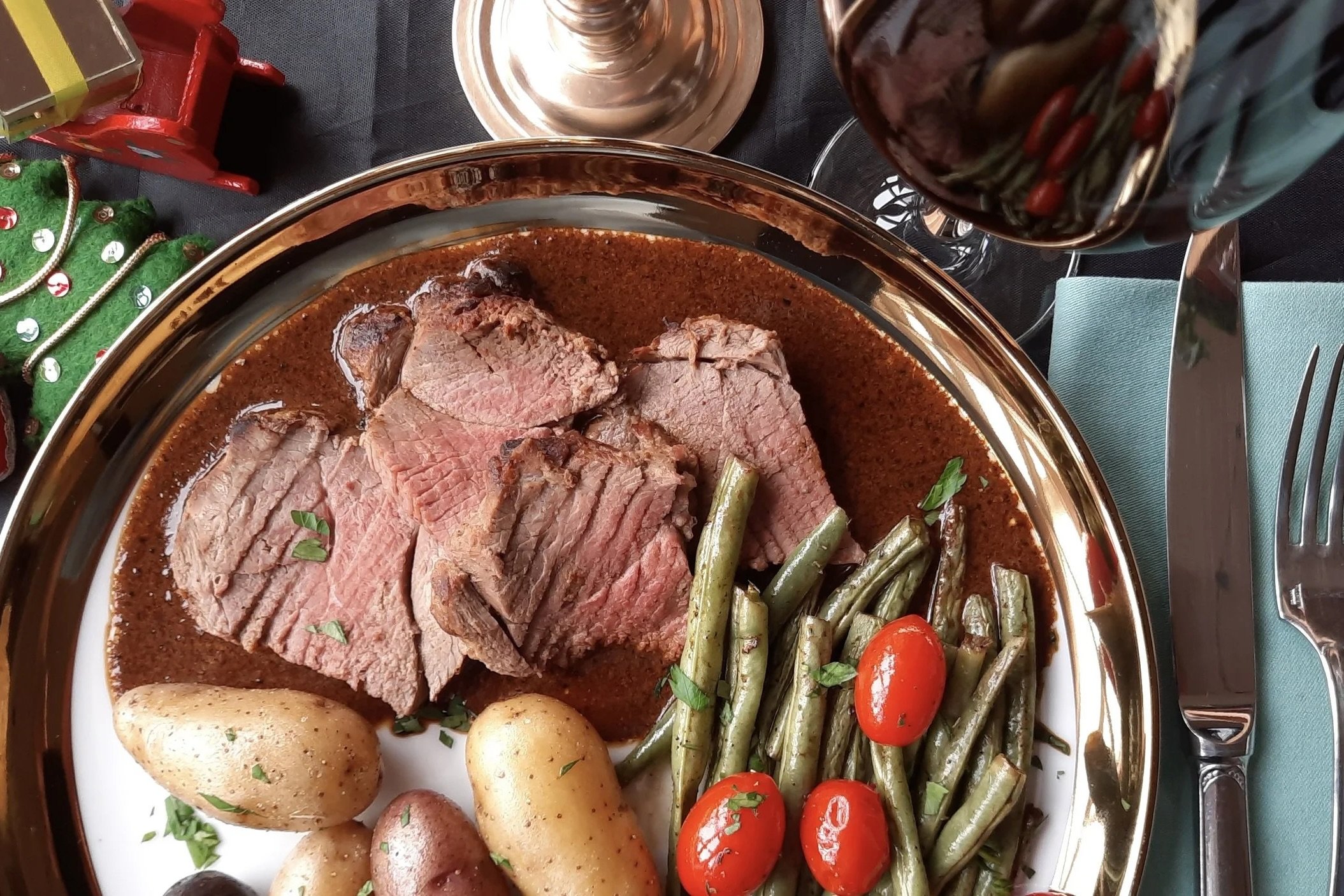Christmas Dinner
My family deemed an important Christmas gift to be food. As our mother grew in cooking skills year to year, Christmas (or Christmas Eve) dinner became her annual showcase. From an early age, our father taught us about wine at daily dinner, saving each year’s best bottles for the table set for Christmas.
My Christmas gift to you is the following casserole of help for your Christmas dinner. (And, for my Jewish friends, cooking answers to a request from one of you for my favorite Hanukkah Latke recipe.)
Recipes: Kick off the meal al’italiana with Marinated Olives and Lupini Beans, a very traditional Christmas meal starter in Italy. A centerpiece of Roast Boneless Leg of Lamb brings so many layers of flavors and aromas to your plate. Pair the lamb with Salt-Roasted Potatoes, a novel way to cook the spuds that’s a perfect match for lamb.
Vegetables and sides? This recipe for Oven-Roasted Vidalia Onions is simple and delish; so, too, are these Green Vegetable suggestions that served well at Thanksgiving. Or, how about capturing Christmas colors by using both green and red vegetables in this uber-popular recipe for Long-Cooked Vegetables? Consider regionalizing the plant-based side with this recipe for Three Sisters Salad, a tasty—and colorful—mix of the three bases of Mesoamerican cuisine.
Videos: For dessert, watch me make My Mom’s Chocolate Sauce (and copy & print its recipe), so that you can slather it on anything from peppermint ice cream to cookies or cakes. More vids to help for Christmas dinner: Four Flavors For Mashed Potatoes, and Deglazing a Roasting Pan, to get that gravy!
Wine: At year’s end, Champagne, always Champagne. (Or, other bubblies.) To accompany roast lamb and potatoes, a plethora of possibilities: Cabernet Sauvignon or Cabernet Franc, of course, but also Garnacha from Spain and other places, and a lip-smacking smattering of red meat friendly reds such as Barbera, Tempranillo, and Syrah/Shiraz. And for wine ideas—and cautions—to sip with chocolate for dessert, check out my suggestions here and here.
How to say—and cook! —“Merry Christmas” in 10 different languages.
